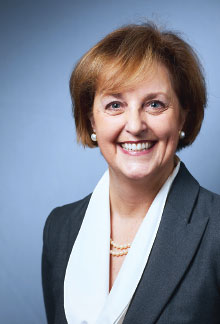Substance Use in Pregnancy Remains a Challenge
Abstract
Cigarette smoking and opioid use disorder in pregnant women illustrate the need for more screening, education, and treatment.

Psychiatrists should screen all of their pregnant patients for substance use, including cigarette smoking, says Kimberly Yonkers, M.D.
Four in five women who decrease or stop hazardous alcohol, tobacco, or drug use during pregnancy return to using those substances after their babies are born, but there are concrete steps psychiatrists can take to treat women both before and throughout their pregnancies. Kimberly Yonkers, M.D., director of the Division of Psychological Medicine and the Center for Wellbeing of Women and Mothers at Yale School of Medicine, discussed different substances, their impact on maternal and infant health, and the importance of tailored treatment in a presentation at the virtual APA Spring Highlights Meeting in April.
Pregnant women tend to stop using alcohol earlier in their pregnancies than they stop using tobacco, cocaine, or marijuana, and they are slowest to stop smoking cigarettes, with many women smoking throughout pregnancy or resuming smoking shortly after delivery, explained Yonkers, who is also editor of the APA journal Psychiatric Research and Clinical Practice.
“Cigarette smoking in general has been decreasing, but still between 10% and 15% of women [smoke], and it’s very, very difficult to discontinue smoking, even in pregnancy,” Yonkers said.
She noted that pharmacological treatments have not shown a benefit in treating pregnant women who smoke. For patients who use nicotine replacement products, intermittent treatments like gum or inhalers may provide benefit with less nicotine exposure than patches. She cautioned against the use of e-cigarettes.
“E-cigarettes are no panacea. The solvents can be a hazard to women,” Yonkers said.
Illicit drug use, notably illicit opioid use, also takes a tremendous toll on pregnant women and their infants.
“The rates of opioid use disorder have gone up in the general population, and pregnant women are not immune to this,” Yonkers said. She added that although pregnancy-associated mortality rose 34% between 2007 and 2019, pregnancy deaths related to opioids doubled during that time. “We have to be careful that we’re not just taking care of kids and offspring. We have to take care of moms.”
To that end, the first step is to screen all pregnant women for substance use disorders, Yonkers said. “If you are not universally screening, you are missing people. That doesn’t mean grabbing a urine test from them. It just means asking them and, ideally, engaging them in treatment.”
Yonkers discussed the benefits of medication treatment for opioid use disorder (OUD), noting that maintenance treatment increases the use of prenatal care among pregnant women and decreases craving for other illicit drugs. She added that medication treatment may increase birthweight in infants born to women who receive it, compared with birthweight in infants born to women who do not receive medication treatment.
Yonkers highlighted guidance by the Council on Patient Safety in Women’s Health Care, a group of women’s health organizations, on working with pregnant women who use substances. In addition to universal screening, other key steps the Council recommends include the following:
Providing education about substance use disorders, including explaining that they are chronic medical conditions and that medication treatment works for OUD, and explaining the risks of neonatal abstinence syndrome.
Matching treatment with the woman’s stage of recovery.
Ensuring that all patients with substance use disorders are enrolled in a treatment program, coordinating care among health professionals, and engaging child welfare in safe care protocols. ■



